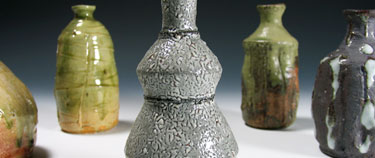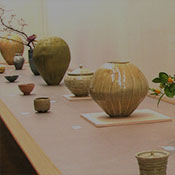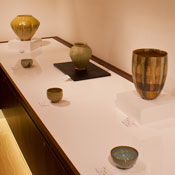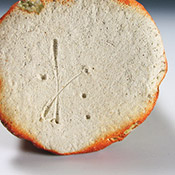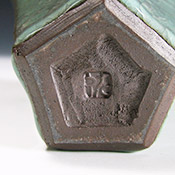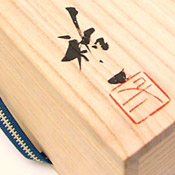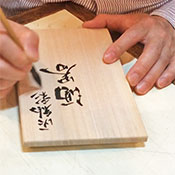At the young age of eighteen, Kyoto native Ikai Yūichi faced the difficult choice of taking over the ceramics shop his father had established along Kyoto's Gojōzaka street or becoming a maker of pottery. He chose the latter and entered the Kyoto School for Ceramic Arts Training where, for the first time in his life, he touched a piece of clay. He soon realized the skill of his own hands and set out to define his own particular style.
After graduation, Ikai established his kiln, Kihei-gama (Kihei Kiln), on a remote plot of land in the mountains to the north of Kyoto city. Populated only by red pines and cedars, the wooded area would become both a source of inspiration for the artist - a place where he could connect with nature - and a convenient source for the principal ingredient in his glazes.
In 1984, Ikai started his formal apprenticeship under Shimizu Yasutaka, further honing his skills in forming and glazing. He also trained under the late Shimizu Uichi (1926-2004) who, in 1985, was awarded the title of Living National Treasure for his outstanding work in ceramic making. And it is from his two sensei (teachers) that Ikai learned the secrets to coaxing subtle hues and fluid effects from the oldest and most rudimentary of all glazes - ash.
Now an accomplished ceramic artist in his own right, Ikai has developed a unique approach to pottery making over the years. That is, to intervene as little as possible between nature and the work itself - ash thus becoming the conduit which carries his message to clay.
View Bio
1963 |
Born in Kyoto |
1983 |
Graduates from Kyoto Prefectural School for Ceramic Arts Training |
1984 |
Opens own kiln, Kihei-gama (Kihei Kiln), under the guidance of Shimizu Uichi (LNT) |
1985 |
Awarded regional Exhibition for Traditional Craft (Kinki Region) |
1986 |
Wins Japanese Traditional Craft Award |
1987 |
Accepted into Ichimonten ceramics guild. |
1989 |
Awarded Encouragement Prize at regional Exhibition for Traditional Craft |
1990 |
Holds first solo exhibition at Kuroda Toen Gallery, Tokyu |
1994 |
Accepted into the Japan Ceramic Arts Association |
2000 |
Exhibits works at Seika University International Ceramic Arts Exhibition, Beijing |
2001 |
Awarded Best Entry prize at 30th regional Exhibition for Traditional Craft, Kinki Region |
2001 |
Works acquired by the New York Metropolitan Museum of Art. |
2002 |
Holds first solo exhibition at Mitsukoshi Dept. Store Gallery, Tokyo |



